Tourist Attractions in Saemangeum Seawall
-
Origin of Saemangeum
Saemangeum area is located arounmd Gunsan City, Buan-gun, and Gimje City in the southwestern part of the Korean Peninsula, neighbouring Gochang-gun and Jeongeup City, Jeonju City and Wanju-gun, and Iksan City. 'Saemangeum', the name of this vast area, was named around 1986. Gimje Plain (Rice Fields) and Mangyeong Plain (Rice Fields) combined have been called Geumman Plain (Rice Fields) from ancient times, and the word "Geumman" was reversed to 'Mangeum', added with 'Sae(meaning 'New')' in front, to mean a new land created.
Saemangeum will become“New golden land”that ushers in a new civilization with eco-friendly environment and green growth encompassing economy, industry, and tourism. -
Saemangeum Seawall
Saemangeum Seawall, which began to be constructed in November 1991, is a massive embankment with the length of 33.9km, connecting Daehang-ri, Buan-gun, Jeollabuk-do to Bieungdo, Gunsan-si. Former U.S. Ambassador to Korea Kathleen Stevens, who visited the site in 2010, said that while China has the Great Wall, Korea has a "Great Wall on the sea". It is 1.4km longer than the Zuiderzee Seawall (32.5km) in the Netherlands, and was listed as the world's longest seawall in the Guinness World Records in August 2010. Saemangeum Seawall is a large offshore structure with an average width of 290m (max 535m) and a height of 36m (max. 54m).
A long line drawn on the blue sea
This is the Saemangeum Seawall viewed from the sky. The shining line has been listed in the Guinness World Records as the longest seawall in the world, representing the national pride.
새만금 방조제 관광명소
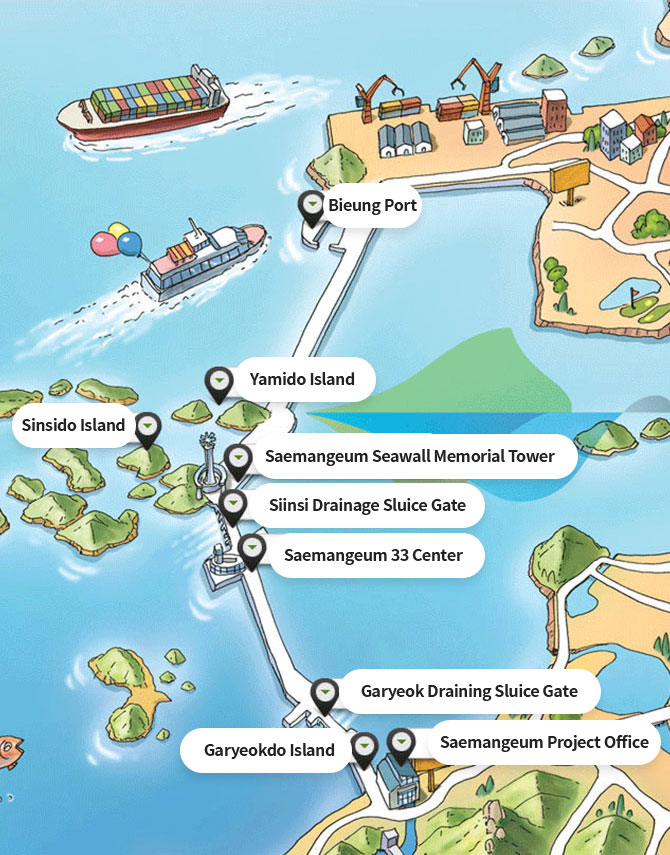
- Bieung Port
- Yamido Island
- Sinsido Island
- Saemangeum Seawall Commemoration Tower
- Siinsi Drainage Sluice Gate
- Saemangeum 33 Center
- Garyeok Sluice Gate
- Garyeokdo Island
- Saemangeum Project Office
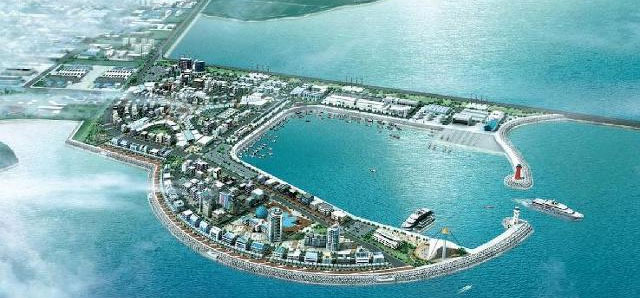 The Ministry of Oceans and Fisheries, and Fisherina Co., Ltd., built Bieung Port at the end point of the Saemangeum Seawall No.4 as a private investment project, for the first time in the country.
The Ministry of Oceans and Fisheries, and Fisherina Co., Ltd., built Bieung Port at the end point of the Saemangeum Seawall No.4 as a private investment project, for the first time in the country. This fishing port is a multi-functional tourist complex, linked to the Saemangeum project, serving as a part of the inner port of Gunsan and a fishing base.
It houses a large seafood market and sashimi restaurants, and serves as a base for cruise tours around Gogunsan Gundo Islands, and attracts tourists at the entrance of the Gaemangeum Seawall.
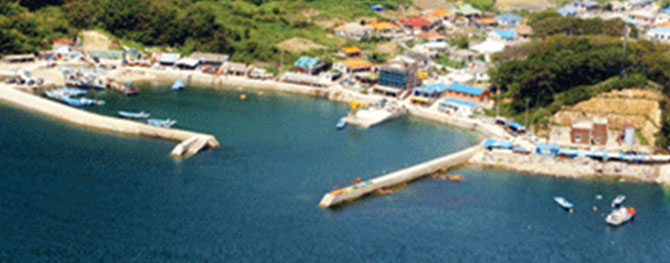 Yamido Island, at the end point of the Seawall No.3, is the closest to the land among Gogunsan Gundo Islands and is about 2.5km southwest of Gunsan.
Yamido Island, at the end point of the Seawall No.3, is the closest to the land among Gogunsan Gundo Islands and is about 2.5km southwest of Gunsan.It was initially called Bamseom Island because there were many chestnut trees("bam" meaning "chestnut" in Korean), but "bam(栗)" was changed into "Ya(夜)" in the Chinese character, added with "mi(味)", meaning "delicious", during the administrative divisions reform in 1914 under Japanese colonial rule.
Yamido Island is emerging as a beautiful sunrise and sunset spot recently.
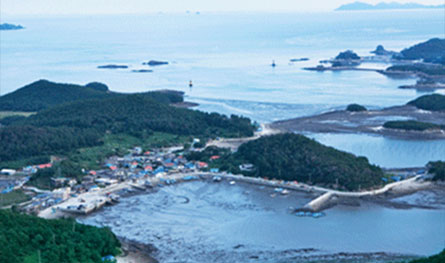 Sinsido Island used to be the largest with an area of 4.2㎢ among the 63 islands in Gogunsan Gundo, but has become a land as being connected to the Saemangeum Seawall.
Sinsido means in chinese charaters an "island that enshrines new things". However, as the Saemangeum project progresses, it is becoming a "new city".
Sinsido Island used to be the largest with an area of 4.2㎢ among the 63 islands in Gogunsan Gundo, but has become a land as being connected to the Saemangeum Seawall.
Sinsido means in chinese charaters an "island that enshrines new things". However, as the Saemangeum project progresses, it is becoming a "new city".This is because a world-class tourist city will be built right in front of the island. Sinsido is also the place where the legend of Choi Chiwon stands. Impressed by the beauty of Wolyeongbong Peak, he took a boat to Sinsido, climbed to
Currently, the trails leading to 199 peaks, Wolyeongjae, Wolyeongbong Peak, Daegaksan Peak, and other 122 peaks are attracting much attention as a day hike destination.
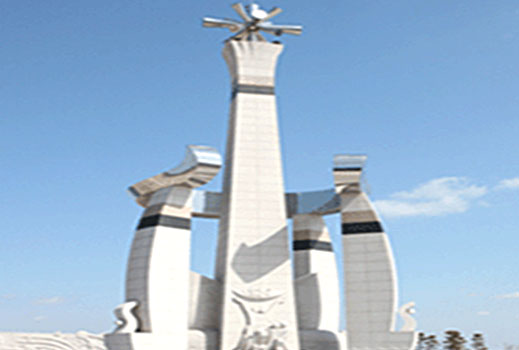 A memorial tower was built to commemorate the completion of the Saemangeum Seawall in April 2010. It's 33m tall, representing the world's longest seawall (33.9km), and named as "The Promised Ground".
A memorial tower was built to commemorate the completion of the Saemangeum Seawall in April 2010. It's 33m tall, representing the world's longest seawall (33.9km), and named as "The Promised Ground". The tower symbolizes the harmony of nature, humans, culture, and the environment, to enhance Korea's rising stature in Asia, and the powerful leap towards the future through harmony and reconciliation of mankind.
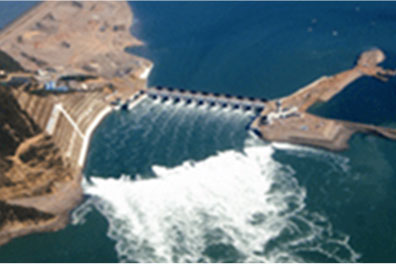 The Sinsi Sluice Gate, designed to block the flooding from the Mangyeong River basin, was installed with 10 double sluice gates.
The Sinsi Sluice Gate, designed to block the flooding from the Mangyeong River basin, was installed with 10 double sluice gates.Each gate is 30m wide and 15m high, and weighs 480 tons. Next to the draining sluice gate, there is also a passageway serving as a fishway through which 400-ton ships can pass.
 Saemangeum 33 Center, built in the shape of a ship, is an integrated control tower that controls the entire Saemangeum area. It's 33m tall from the ground to the top, symbolizing the length of the Saemangeum Seawall. The word
Saemangeum 33 Center, built in the shape of a ship, is an integrated control tower that controls the entire Saemangeum area. It's 33m tall from the ground to the top, symbolizing the length of the Saemangeum Seawall. The word
 It is the same size as the Sinsi Drainage Sluice Gate, but it has 8 doors, 30m wide and 15m high, and each door weighs 484 tons, equivalent to 6,050 bags of rice(80kg per bag). The discharge amount is 15,682 tons per second, which is
It is the same size as the Sinsi Drainage Sluice Gate, but it has 8 doors, 30m wide and 15m high, and each door weighs 484 tons, equivalent to 6,050 bags of rice(80kg per bag). The discharge amount is 15,682 tons per second, which is In particular, the fishway serving as a passageway, maximizes the free movement of fish through a fish attraction pump installed instead of the pool-and-weir type, and a low-rise drainage facility built to prevent contamination of
However, one of the sluice gates of the seawall built for the Saemangeum project was installed on Garyeokdo Island, making it an area with one of the strongest tidal currents.
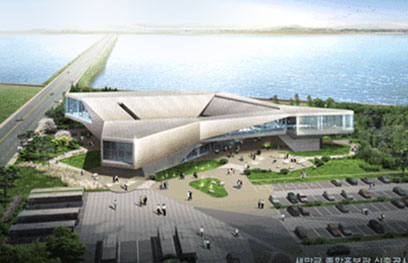 Saemangeum Project Office, newly built after the old exhibition center was demolished, has one floor in basement and three floors above the ground, covering a land area of about 13,884㎡ and a total floor area of around 3,636㎡.
Saemangeum Project Office, newly built after the old exhibition center was demolished, has one floor in basement and three floors above the ground, covering a land area of about 13,884㎡ and a total floor area of around 3,636㎡. Major facilities include Special Exhibition Hall, Permanent Exhibition Hall, Promotional Video Theater, observatory, conference room and rest area.
In particular, the exhibition halls display the history of reclamation technology in Korea, current issues about land use, current status of the reclamation projects, measures to improve water quality, key migratory birds stopover sites, scale models of the Saemangeum Seawll and the Draining Sluice Gate, etc., offering an informative experience to visitors.
Saemangeum Seawall Convenience Facilities
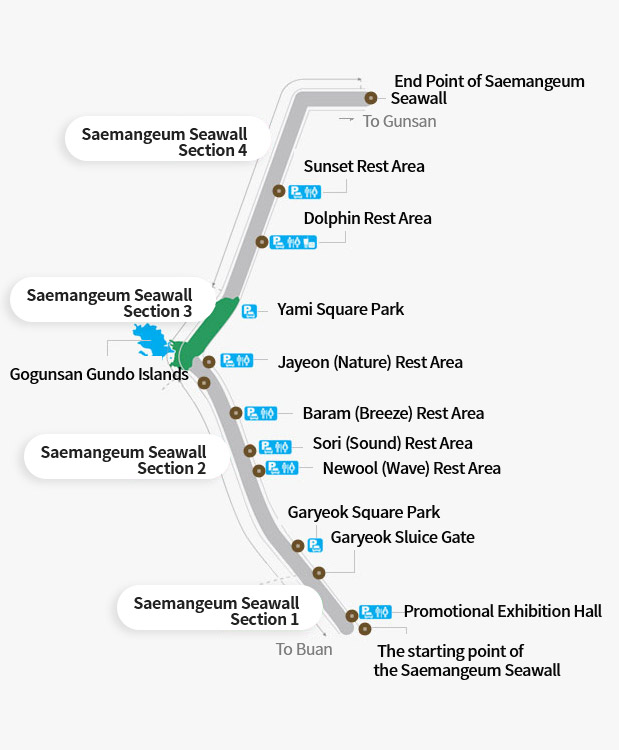
at the Saemangeum Seawall
There are six rest areas, and 17 parking lots to accommodate 1,800 vehicles.
There are 14 restrooms with 307 toilets, 3 cafeterias (Garyeok Square Park, Dolphin Rest Area, Sunset Rest Area), and 4 observation decks (two at Seawall Section 2 and Section 4 each).










